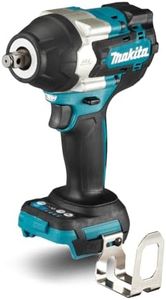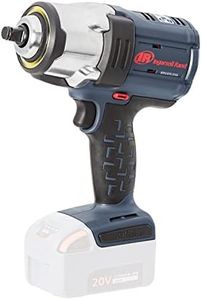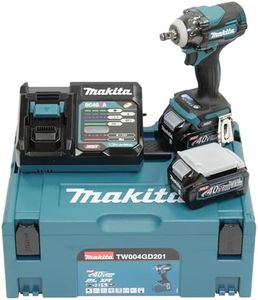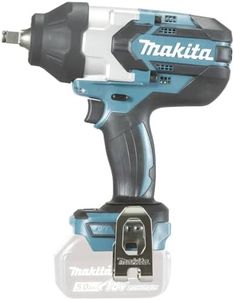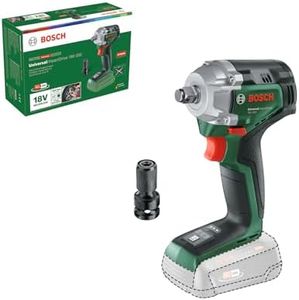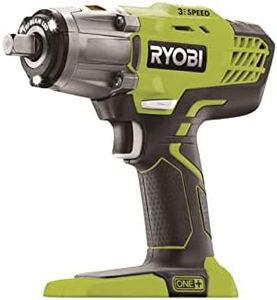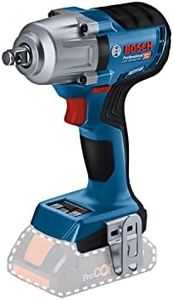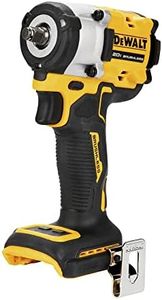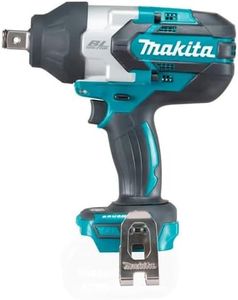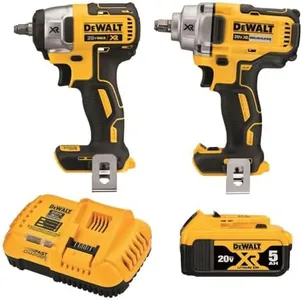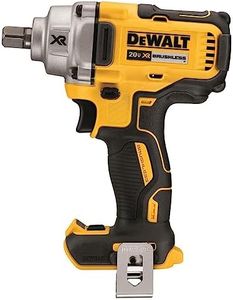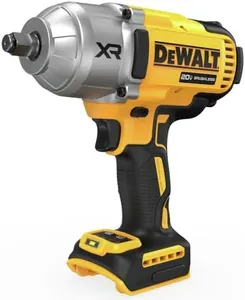We Use CookiesWe use cookies to enhance the security, performance,
functionality and for analytical and promotional activities. By continuing to browse this site you
are agreeing to our privacy policy
10 Best Cordless Impact Wrenches
From leading brands and best sellers available on the web.Buying Guide for the Best Cordless Impact Wrenches
Choosing the right cordless impact wrench involves thinking about what kinds of jobs you'll regularly tackle — for example, are you working on cars, assembling furniture, or doing construction work? Impact wrenches come in a variety of sizes and power levels, and your best choice will be one that matches your tasks in both strength and ease of handling. Focus on the core features that determine how powerful, efficient, and comfortable an impact wrench will be for your needs.TorqueTorque is a measure of how much twisting force the impact wrench can deliver. It's important because higher torque means the tool can handle tougher jobs, such as loosening tight, rusted bolts or heavy-duty work. Generally, torque values are listed in foot-pounds (ft-lb) or Newton-meters (Nm). Lower torque (under 150 ft-lb) suits small jobs like furniture assembly or light automotive work. Mid-range torque (150-300 ft-lb) is ideal for most car repairs, while high torque (over 300 ft-lb) is typically needed for industrial or heavy equipment tasks. Choose a torque level that matches the kind of work you do most often — don't pay for extra power you'll never use, but make sure you have enough strength for your toughest jobs.
Battery VoltageBattery voltage indicates how much electrical power the impact wrench can draw, usually ranging from 12V to 20V for most cordless tools. This spec is important because higher voltage often means better performance and longer run times, but it can also add weight. Lower voltage tools (12V) are lighter and easier to handle for smaller or overhead tasks. Mid-range (18V) offers a good balance for versatile use, while higher voltage (20V or more) provides the muscle needed for demanding applications. Consider how long you typically work and the heaviness of the jobs: lighter tools for convenience or heavier ones for raw power.
Battery Capacity (Ah)Battery capacity, measured in amp-hours (Ah), determines how long your impact wrench can run before needing a recharge. Larger capacities mean you can work longer on a single charge, but may also increase the tool’s weight. Small batteries (1.5-2.0Ah) are suitable for sporadic or shorter tasks, mid-sized batteries (2.0-4.0Ah) provide a good balance for most users, and larger ones (over 4.0Ah) are best for extended projects. Think about how much downtime you can tolerate and whether you prefer swapping batteries or recharging less often.
Drive SizeDrive size refers to the size of the square fitting that connects to your socket — the most common sizes are 1/4-inch, 3/8-inch, and 1/2-inch. Smaller drives (1/4-inch and 3/8-inch) are perfect for lighter jobs and tight spaces, while 1/2-inch drives handle most automotive and general applications. Larger drives (like 3/4-inch) are used for heavy-duty or industrial tasks. Match the drive size to the sockets and the type of fasteners you'll be working with most often.
Weight and ErgonomicsThe overall weight and how the impact wrench feels in your hand is crucial for comfort during use, especially if you plan extended periods of work. Lighter models are easier to handle overhead or in awkward positions, while heavier models may offer more power but can tire you out more quickly. Look for tools with comfortable grips and consider handling them if possible to judge balance and ease of use. Let the kind and duration of your projects guide you toward something manageable for your body.
Speed Settings and ControlSpeed settings, often displayed as revolutions per minute (RPM), let you adjust how quickly the tool spins. Having variable speeds or multiple settings is important for precise work where you might want to avoid stripping threads or overtightening bolts. Lower speeds are good for careful work, while higher speeds can get through big jobs faster. If you regularly work with different materials or fastener sizes, choose a model with easy-to-use variable speed control so you have flexibility for each task.

